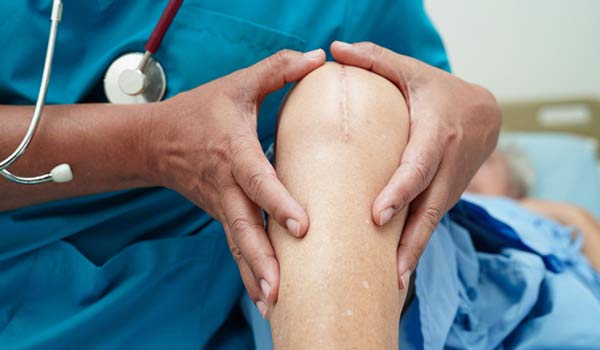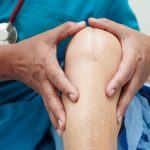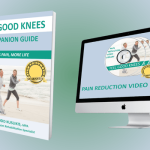Avoid the top 5 mistakes after knee replacement surgery to ensure a smooth recovery journey. By steering clear of these common pitfalls, you can optimize your healing process and enhance your overall post-operative experience.
From neglecting physical therapy to disregarding doctor’s orders, these missteps can hinder your progress and delay your return to normal activities.
Stay informed, stay proactive, and sidestep these errors to make the most of your knee replacement recovery. Learn how to navigate the challenges effectively and set yourself up for a successful rehabilitation phase.
Top 5 Mistakes After Knee Replacement
Learn the top 5 mistakes to avoid after knee replacement surgery to ensure a speedy recovery and prevent complications.
Overexertion
After knee replacement surgery, overexertion is a common mistake that patients make. It’s crucial to follow the rehabilitation plan provided by your healthcare team. Pushing yourself too hard can lead to complications and slow down the recovery process. Remember, rest is equally important for healing.
Neglecting Physical Therapy
Is another mistake to avoid post knee replacement surgery. Physical therapy plays a vital role in restoring strength and mobility to your knee. Skipping or not fully committing to these sessions can hinder your progress. Make sure to attend all appointments and follow through with the exercises at home.
Ignoring Pain Signals
Ignoring pain signals after knee replacement surgery can be detrimental. While some discomfort is normal during the recovery period, persistent or worsening pain should not be overlooked. Communicate any unusual pain levels to your healthcare provider immediately. It could indicate an issue that needs prompt attention.
Returning to Normal Activities Too Soon
Patients often make the mistake of returning to their normal activities too soon after knee replacement surgery. It’s essential to gradually ease back into your daily routines and avoid high-impact activities initially. Rushing this process can strain the new joint and impede proper healing.
Poor Nutrition and Hydration
Maintaining a healthy diet and staying hydrated are crucial aspects of the recovery process post knee replacement surgery. Nutrient-rich foods, especially those high in calcium and vitamin D, support bone health and aid in healing. Dehydration can lead to complications, so ensure you drink an adequate amount of water daily.
How Important Is it to Adhere to the Post-operative Rehabilitation Plan?
Adhering to the post-operative rehabilitation plan is crucial for successful recovery after knee replacement. Following the prescribed exercises, attending physical therapy sessions, and gradually increasing activity levels help improve strength, flexibility, and overall function of the knee.
Follow Rehabilitation Guidelines
- After knee replacement surgery, adhering to the post-operative rehabilitation plan is crucial for successful recovery. Following the guidelines provided by your healthcare team can significantly impact your healing process.
- Rehabilitation typically starts soon after surgery. Engaging in physical therapy helps improve mobility and strength in the knee joint. Completing the prescribed exercises aids in restoring function and reducing pain.
Avoiding Overexertion
- One common mistake many individuals make after knee replacement is overexerting themselves. Pushing too hard too soon can lead to complications and delay recovery. It’s essential to listen to your body and not exceed the recommended activity levels.
- Balancing rest with exercise is key. Taking breaks between sessions and allowing time for the body to recover is vital for optimal healing. Gradually increasing activity levels as advised by your healthcare provider is crucial.
Managing Pain Effectively
- Pain management plays a significant role in post-operative care after knee replacement. Properly utilizing prescribed pain medications can help control discomfort and allow you to engage in necessary activities.
- Communicating any concerns about pain levels with your healthcare team is essential for appropriate adjustments.
Maintaining a Healthy Lifestyle
- Incorporating a healthy lifestyle post-surgery is essential for overall well-being. Maintain a balanced diet rich in nutrients to support healing and boost energy levels. Staying hydrated and avoiding excessive alcohol consumption can aid in recovery.
- Regular physical activity beyond prescribed therapy exercises can also be beneficial. Engaging in low-impact exercises, such as walking or swimming, can help maintain joint flexibility and muscle strength.
Is it Normal to Experience Swelling and Discomfort After Knee Replacement Surgery?
Swelling and discomfort are common after knee replacement surgery and usually subside as the healing process progresses. Elevating the leg, applying ice packs, taking prescribed pain medications, and following the doctor’s recommendations can help manage these symptoms effectively.
Recovery Process
- After knee replacement surgery, patients may experience swelling and discomfort, which are common during the initial recovery period. This is a natural response of the body to the surgical trauma.
- Swelling typically peaks around 2-3 days after surgery and gradually decreases over the following weeks.
Managing Swelling
- To manage swelling, doctors usually recommend elevating the leg and using ice packs. Elevating the leg above heart level helps reduce swelling by promoting better circulation.
- Ice packs can also help alleviate pain and swelling. It’s essential to follow the doctor’s instructions carefully to ensure proper healing.
Discomfort Management
- Discomfort after knee replacement surgery can be managed through pain medications prescribed by the doctor. These medications help control pain and discomfort, allowing patients to engage in rehabilitation exercises effectively.
- It’s crucial not to skip any prescribed medications for optimal pain management.
Rehabilitation Importance
- Adhering to the post-operative rehabilitation plan is crucial for successful recovery after knee replacement surgery. Physical therapy plays a significant role in restoring strength and mobility to the knee joint.
- Patients should actively participate in rehabilitation sessions to achieve the best outcomes.
Complications Awareness
- While some swelling and discomfort are normal after knee replacement surgery, it’s essential to be aware of potential complications.
- Excessive swelling, persistent pain, redness, warmth, or drainage from the incision site could indicate an infection or other issues requiring medical attention.
Long-Term Outlook
- Most patients experience significant improvement in knee function and reduced pain following knee replacement surgery. However, it’s essential to follow post-operative care instructions diligently to ensure a smooth recovery process.
- With proper care and commitment to rehabilitation, patients can enjoy long-term benefits from the surgery.
When Can I Expect to Resume Normal Daily Activities After Knee Replacement Surgery?
The timeline for resuming normal daily activities varies for each individual but typically ranges from 4 to 12 weeks post-surgery. It’s essential to follow your surgeon’s guidance on when you can return to work, drive, engage in recreational activities, and perform routine tasks.
- Recovery Timeline: After knee replacement surgery, resuming normal daily activities is a crucial milestone. Typically, patients can expect to start walking with assistance within a day or two post-surgery. By the end of the first week, most individuals can walk short distances without aid.
- Physical Therapy Initiation: Plays a vital role in the recovery process. Patients usually begin physical therapy sessions shortly after surgery to improve mobility and strength. These sessions help in regaining flexibility and enhancing muscle function around the knee joint.
- Return to Work: Returning to work after knee replacement surgery varies based on the type of job one has. Individuals with sedentary jobs may be able to return to work within 2-6 weeks, while those with more physically demanding roles might need 3-6 months before resuming work.
- Driving Ability Regain: Regaining the ability to drive after knee replacement surgery is a significant concern for many patients. It is generally safe to resume driving when you can comfortably sit in a car, have good control over your vehicle, and are no longer taking prescription pain medication.
- Impact on Recreational Activities: Engaging in recreational activities post-surgery is essential for overall well-being. Patients can gradually resume low-impact activities like swimming and cycling within 6-8 weeks. However, high-impact activities such as running or jumping should be avoided to prevent damage to the new knee joint health.
Conclusion
You’ve learned about the top 5 mistakes to avoid after knee replacement surgery. By understanding these pitfalls, you can take proactive steps to ensure a smoother recovery journey.
Remember to prioritize your physical therapy, follow your doctor’s advice diligently, maintain a healthy weight, avoid high-impact activities, and not rush the recovery process. These actions will significantly contribute to a successful rehabilitation and long-term well-being post-surgery.
Take charge of your recovery by implementing these insights. Your commitment to avoiding these common mistakes will not only enhance your healing process but also set you up for a more robust and sustainable outcome. Stay informed, stay cautious, and prioritize your health above all else.



